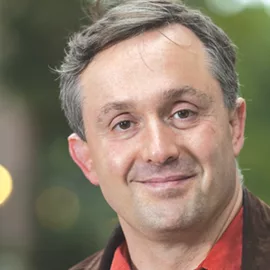
 By Stephen Balzac
By Stephen Balzac
June 13, 2013
The solution always seems so obvious once Holmes explains it.
I’ve been reading the Sherlock Holmes stories to my 7-year-old son. Even though I read the stories years ago, I find that I can rarely remember the endings. As a result, I’m puzzling them through along with my son. While it’s certainly true that sometimes Holmes is taking advantage of information not available to the reader, such as his encyclopedic knowledge of mud or cigar ash, quite often the clues are present. Even when Holmes doesn’t clue us in until the end exactly what about the cigar ash was important, we do get to see that he was interested in it. Quite often, that should be all a reader needs, except, of course for the fact that it isn’t.
At the end, Holmes finally reveals how he solved the mystery. Watson expresses his astonishment, Holmes shrugs and, despite belief to the contrary, usually does not say, “Elementary, my dear Watson.”
Whether or not Holmes says it, what he is doing is not elementary. Putting together the apparently unrelated clues to assemble a picture of how the crime was committed is a very difficult skill: consider how many readers are unsuccessful! Yet once we know the answer, it is equally difficult to imagine the pieces fitting together any other way. Harder to imagine is putting the pieces together to anticipate the murder before it has even happened! I suspect that Holmes himself would have trouble with that: indeed, in the stories where he had to do just that, he was rarely able to do it fast enough to prevent the crime from occurring. The reader, of course, is even more in the dark than Holmes: even knowing that he’s solved the case from the information presented, we still can’t figure it out.
When reading Sherlock Holmes, the resultant feelings of frustration, amazement, admiration, and feeling like an idiot for missing the obvious clues, are all part of the enjoyment of the story. In a business setting, however, it’s not enjoyable at all.
I can’t count the number of times I’ve heard statements like:
“I can’t believe he made a mistake like that. He should have seen it coming!”
“If Fred was as good as he claims he is, he would have anticipated that.”
“I can’t believe she was taking the project seriously!”
I could go on, but you get the idea. When someone makes a mistake, we often confuse hindsight with foresight: while hindsight might be 20-20, foresight is not. In fact, in a great many cases it’s more like 20-2000. But, because things are so obvious in hindsight, the tendency is to assume the person who made the mistake must have been careless, or foolish, or goofing off, rather than making the best decision they could with the information they had at the time. Perhaps there was some way of looking at the information that would have suggested the problem was in the offing, but, like in a Sherlock Holmes story, putting together the disparate pieces of data in just the right way in the time available is no trivial task.
Conversely, there are times when people do correctly recognize the clues that suggest a serious problem is in the offing. At one technology company, several engineers saw the clues and put in the time necessary to analyze them and avert the impending disaster. Their thanks was being yelled at for wasting time: the problem was clearly obvious, even though no one else had seen it, and they had clearly not been working very hard if it took them “that long” to figure it out.
Lest this be viewed as a problem unique to the tech industry, I had a similar experience running a management training predictive scenario game. At the end of the exercise, one of the participants told me in no uncertain terms how the outcome of the game was clearly predetermined. He explained in great detail how the different factors in the exercise could play out only the one way, and that this was basically unfair. I gently broke the news to him that I’d run that particular exercise over a dozen times, with wildly different outcomes.
“Impossible!” he said, and stormed off.
Mixing hindsight and foresight isn’t such a good thing, but is it really anything more than what amounts to an annoyance? In fact, yes. When we fall victim to the 20-20 foresight in hindsight trap, and disparage people for not spotting the “obvious” problem, what we really are doing is telling them they are incompetent. Done often enough, they might start to believe it, reducing performance, motivation, and innovation in the company. When someone does successfully anticipate a problem and we dismiss that accomplishment, we are implicitly telling him or her not to bother doing that again! The results of that should be obvious.
Neither of those points, though, are the most serious problem: when we convince ourselves that problems are always obvious, we don’t spend as much effort trying to anticipate them. If it’s not obvious, it must not be there. It’s sort of like saying that if you close your eyes when crossing the street, there won’t be any cars.
That is a good way to get blindsided by some very big problems indeed.
Stephen Balzac is president of 7 Steps Ahead, an organizational development firm focused on helping businesses get unstuck. Steve is the author of “The 36-Hour Course in Organizational Development,” published by McGraw-Hill, and a contributing author to volume one of “Ethics and Game Design: Teaching Values Through Play.” For more information, contact him at 978-298-5189 or [email protected].







